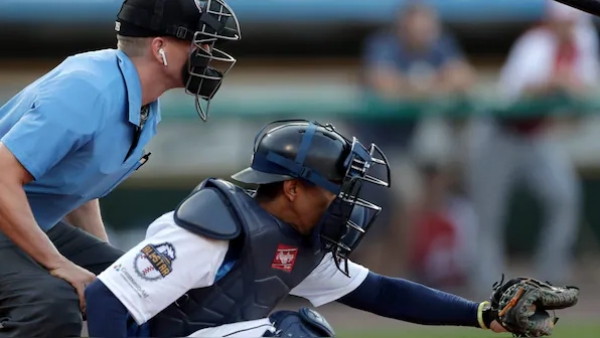The automated ball-strike system (ABS) could be officially headed to Major League games next season. Commissioner of MLB, Rob Manfred on Wednesday, said he plans to introduce a proposal to MLB’s competition committee that includes bringing the ABS system to MLB in 2026.
The ABS system was used at 13 spring training sites in 2025, which included 19 teams, and was employed in approximately 60 percent of spring training games this past spring. Teams started with two challenges each and lost a challenge every time they were not overturned. If the call they challenged was overturned, they retained their challenge.
The pitching teams saw a 54.4 percent overturn rate, while the club hitting was overturned on just 50 percent of calls, and catchers were the most successful at 56 percent of calls overturned. Pitchers’ challengers were overturned on just 41 percent of calls.
With a full spring training use of the ABS in the books and reviewed by players and officials within the MLB, commissioner Manfred will now propose to implement the system into games officially in 2026.
Joe Nicholson-USA TODAY Sports
Should the system be approved for use, Manfred said human umpires will still make the majority of ball-strike calls themselves as they did in spring training and that the ABS system would be used just as it was in spring, with teams starting each game with two challenges they could use to challenge calls.
“I do think we’re going to pursue the possibility of changing that process, and we’ll see what comes at the end of that,” said Manfred. He noted that teams appear to be overall positive about ABS and that implementing it could diffuse players, coaches, etc. sending him emails to complain about balls, strikes, and umpires’ calls.
Kevin Slowey, the MLBPA managing director, noted that as they always have in the past, “players will review any proposed rule changes and provide their feedback and on-field experiences through the competition committee.”
Manfred noted that his biggest concern is implementing the system in a way the players will accept. The biggest note on the ABS system is that it is not a human making the calls, thus tightening or widening the strike zone on certain pitch counts, which will likely be different from that of a human umpire’s strike zone.
In years past and throughout history, it has not been uncommon for the league and the players’ association to disagree on rules or policy changes, and we have also seen lockouts and delayed seasons as a result of disagreements between the committees. With that, Manfred is making sure this is a completely transparent process that everyone agrees upon the implementation of before proceeding forward.
“I want them [the players] to feel like we respected the committee process and that there was a full airing of concerns about the system, and an attempt to address those concerns before we go forward,” said Manfred.
Along with the implementation of the ABS system, MLB is also testing a check-swing review system in the minor leagues this season. It likely won’t make its way to spring training games next year, as Manfred wants the focus to be on the ABS system and getting used to that. However, the ABS system was first used in the minor leagues, so it is likely that should that continue to go well in the minor leagues, it could be coming to spring training in the years to come, as the ABS system did.


